The modernist movement in architecture is a landmark trend that emerged at the beginning of the 20th century and revolutionized our understanding of construction. Modernism in architecture was a response to rapid progress in science and technology, defining the appearance of modern cities around the world and offering a new view on the functionality of space.
«Modernist architecture is not just a style, but a philosophy of space where form follows function. Beauty lies in the honesty of construction and materials, not in ornamentation and decoration», — Mies van der Rohe, one of the founders of modernist architecture.
Basic Principles of Modernist Architecture
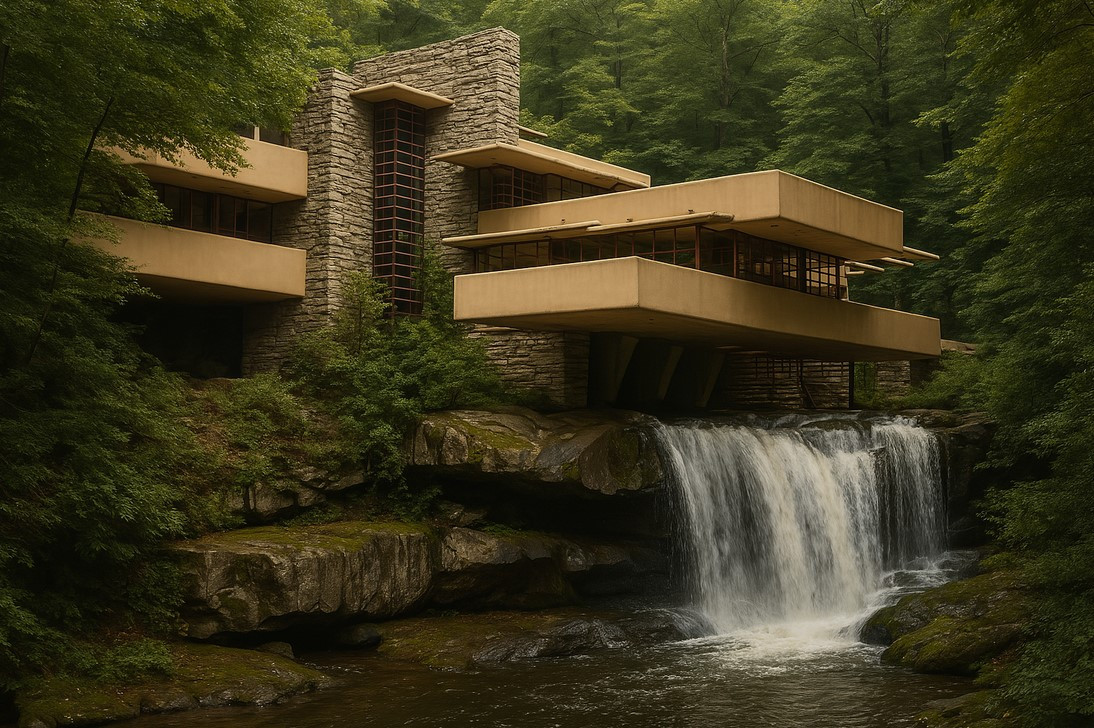
The modernist style in architecture has a number of distinctive features that made it revolutionary for its time. Understanding these principles allows us to appreciate the contribution of this movement to the development of 20th century architecture and its transformation into the international style.
These principles were formulated and developed in close connection with the famous Bauhaus school, which became the cradle of rational design and decoration-free architecture. As noted by experts from the Victoria and Albert Museum, it was here that traditional materials — stone, brick, and wood — gave way to new structural solutions based on steel, concrete, and glass, inspired by modernist principles of open interiors and the absence of ornament.
- Rejection of excesses, decoration, ornaments, preference for laconic facades and clean planes
- Use of simple geometric shapes — cube, cylinder, rectangle
- Application of modern materials — glass, concrete, steel
- Open, free layouts with functional zoning
- Rational approach to space organization
- Special attention to construction and building technologies
- Integration of interior and exterior through large windows and terraces
- Honest approach to materials and their properties
These features formed the recognizable appearance of modernist buildings and reflected the worldview of the technological development era, making architectural projects in the modernist style in demand around the world. Functionalism as the basis of this movement's philosophy defined the approach to design where form strictly follows the function of the object.
The Impact of Technical Progress on the Formation of Modernist Style in Architecture
At the beginning of the 20th century, technological breakthrough radically changed construction capabilities. The development of architecture in the 20th century is inextricably linked with the emergence of innovative materials and structural solutions that became the foundation for design in the modernist style.
| Technological Innovation | Implementation Period | Impact on Architecture | Implementation Examples |
|---|---|---|---|
| Reinforced Concrete | 1890-1910 | Possibility of creating free layouts, cantilever structures | Villa Savoye (Le Corbusier), Fallingwater (F.L. Wright) |
| Steel Frame | 1880-1920 | Construction of skyscrapers, large glass surfaces | Seagram Building (Mies van der Rohe), Bauhaus Building (W. Gropius) |
| Float Glass | 1950s | Transparent facades, blurring boundaries between interior and exterior | Glass House (Philip Johnson), Farnsworth House (Mies van der Rohe) |
| Prefabricated Reinforced Concrete Elements | 1930-1950 | Standard construction, modularity, simplified assembly | Unite d'Habitation residential complex (Le Corbusier) |
| Aluminum Structures | 1940-1960 | Lightweight facade systems, curtain walls | Lever House (Gordon Bunshaft), New National Gallery Hall (Mies van der Rohe) |
The table clearly demonstrates how technical progress provided architects with new tools that made it possible to implement revolutionary ideas of modernist architecture and create projects that changed the appearance of cities around the world.
Famous Modernist Architects and Their Works
The development of 20th century architectural styles is inseparably connected with outstanding architects whose works defined the appearance of modernism. Who created modernist architecture? First of all, these were innovators whose pioneering projects became classics of this movement and continue to inspire modern specialists.
Le Corbusier, one of the pioneers of modernist architecture, experimented with reinforced concrete, creating houses on pilotis (supporting columns) that freed up space under the building. His famous Villa Savoye and residential building on Nungesser-et-Coli Street demonstrate the five principles of new architecture formulated by the master.
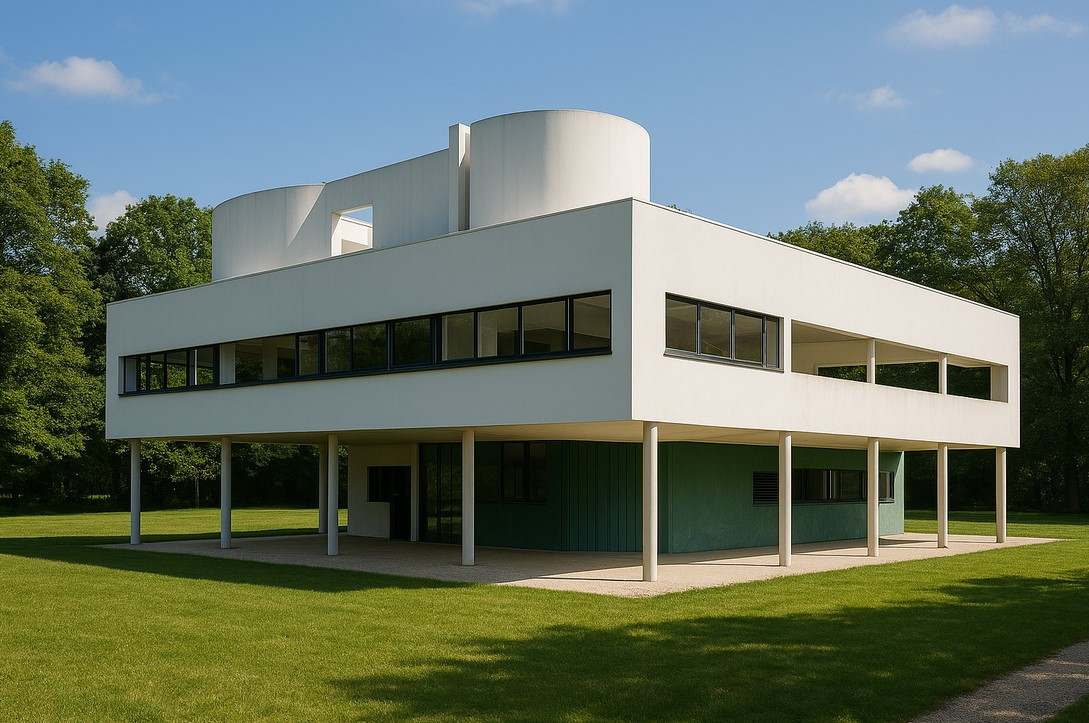
Walter Gropius, founder of the Bauhaus school, developed a functional approach to design where every detail of the building had to serve its purpose. The Bauhaus building in Dessau with its transparent facades became a manifesto of the new international style in architecture.
«In designing buildings in the modernist style, it's important to remember that minimalism doesn't mean simplicity. Behind the apparent simplicity lies careful thought about every detail, every junction of materials. It is in this thoughtfulness that the true beauty of modernist architecture lies», — Zaha Hadid, architect, continuator of modernist traditions.
Mies van der Rohe became famous for the concept of "less is more," creating elegant structures of steel and glass. His German Pavilion in Barcelona and HL-tower in The Hague demonstrate the laconicism and sophistication of modernist architecture.
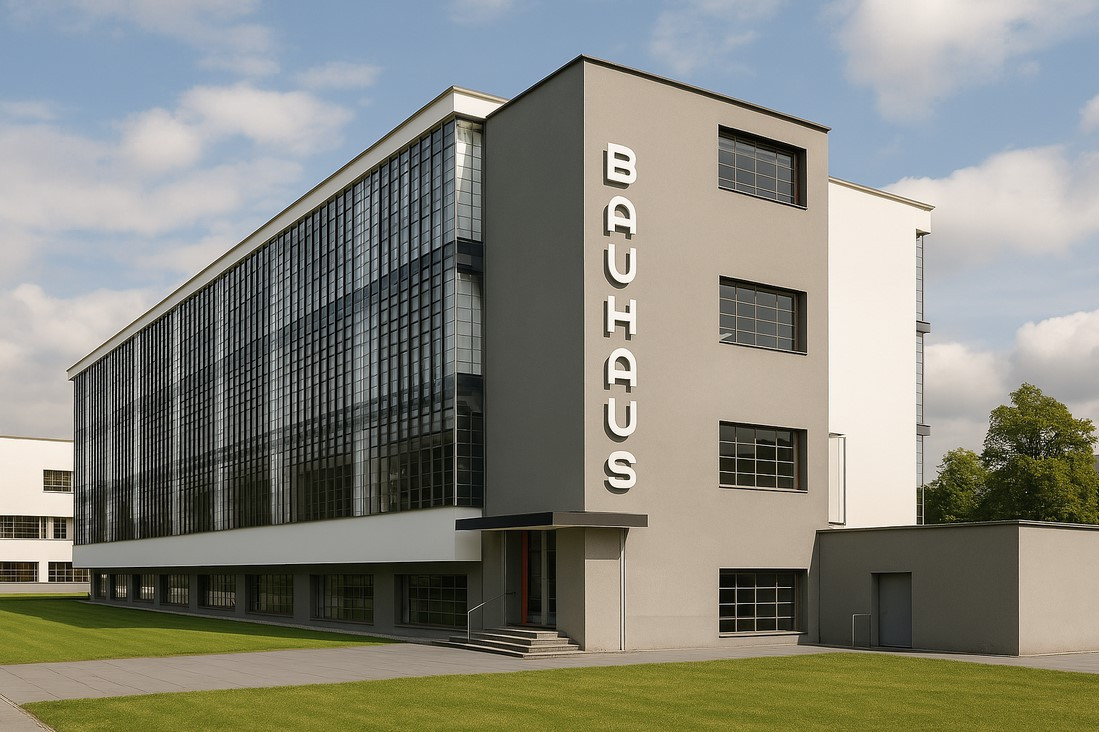 Frank Lloyd Wright, a representative of organic architecture, combined modernist techniques with the idea of harmony with nature. His famous Fallingwater house in Pennsylvania became a symbol of how modern materials can be integrated into natural surroundings.
Frank Lloyd Wright, a representative of organic architecture, combined modernist techniques with the idea of harmony with nature. His famous Fallingwater house in Pennsylvania became a symbol of how modern materials can be integrated into natural surroundings.
Basic Materials and Structures in Modernist Architecture
A distinctive feature of modernist architecture was the use of innovative materials for that time — reinforced concrete, steel, glass. Their application allowed modernist architects to bring to life bold ideas that were previously technically impossible.
Reinforced concrete provided unlimited possibilities for creating smooth lines, curved surfaces, and cantilever extensions. Thanks to this material, free layouts without load-bearing walls became possible, which completely changed the approach to organizing interior space.
Huge glazed surfaces, which became the hallmark of modernist buildings, appeared due to the use of steel frame. This structure allowed to significantly reduce the thickness of load-bearing elements and ensure maximum penetration of natural light into interiors.
The transparency and lightness of glass and metal structures created a sense of open space, which corresponded to the philosophy of modernism — erasing boundaries between the internal and external world, between man and the environment.
Success Story: A Modernist House That Changed Life
When architect Alexey M. undertook the design of a house for the Karpov family, he faced a challenging task. The plot on a slope with a stunning view of the lake required a non-standard solution. "I proposed to them a concept of a modernist house with a cantilever structure and panoramic glazing. At first they doubted, fearing that such a solution would be impractical," recalls Alexey.
Two years after the completion of construction, the family cannot imagine life in another house. "Morning light fills the entire space, erasing the boundary between the house and the surrounding nature. We have ceased to feel the confinement of space. Modernist architecture has not just changed our dwelling — it has changed our way of life," shares Irina Karpova.
Spread of Modernism in Architecture Around the World
Due to its versatility and simplicity, 20th century architectural styles, particularly modernism, became widespread in different countries. The international style, as it was often called, manifested itself both in European capitals and in the USA, Latin America, and Asia.
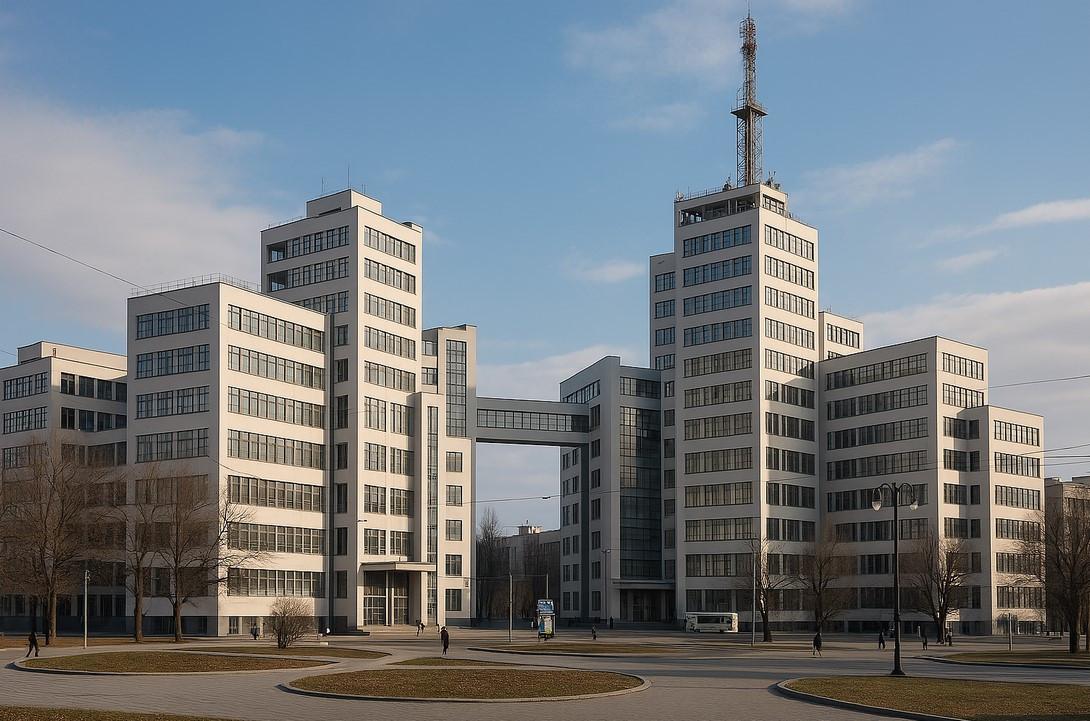
In the USSR, constructivism of the 1920-30s had much in common with Western modernism, despite ideological differences. Buildings by Melnikov, Ginzburg, Leonidov demonstrated the same principles of functionality and rationality as the works of their European colleagues. Constructivism as one of the architectural currents of modernism was particularly prominent in public buildings and workers' clubs of that time.
«Modernist architecture is a language understood throughout the world because it is based on universal principles of logic, clarity, and rationality. When ordering a house in the modernist style, you get not just a structure, but a philosophy of space that remains relevant decades later», — Richard Meier, American modernist architect.
In Latin America, modernism received special development thanks to architects such as Oscar Niemeyer, who combined pure geometric forms with plasticity and expression. His works in Brasilia became a symbol of a modernist city built "from scratch."
Researchers of contemporary architecture continue to study the influence of modernism on various regions of the world. As shown by Wallpaper's international review, masterpieces of modernist architecture can be found on all continents, and they continue to inspire contemporary architects with their innovative solutions and bold approach to organizing space.
In Asia, especially in Japan, architectural currents of modernism merged with local traditions, leading to the emergence of a unique direction represented by the works of Kenzo Tange and Tadao Ando.
Thus, modernist architecture went far beyond Europe and influenced the appearance of cities on a global scale, becoming a truly international style.
Neo-modernism and Contemporary Application of Modernist Principles
Since the early 2000s, we have observed a revival of interest in modernist principles in contemporary architecture. Neo-modernism reinterprets ideas from the first half of the 20th century, combining them with the latest technologies and environmental requirements.
Contemporary architects such as Rem Koolhaas, Zaha Hadid, and Richard Meier actively use modernist principles in their projects. Landmark works include the CCTV headquarters in Beijing (Koolhaas), the Heydar Aliyev Center in Baku (Hadid), and the Museum of Contemporary Art in Barcelona (Meier). Construction of houses in the modernist style is experiencing a new wave of popularity today due to the practicality and aesthetic appeal of this movement.
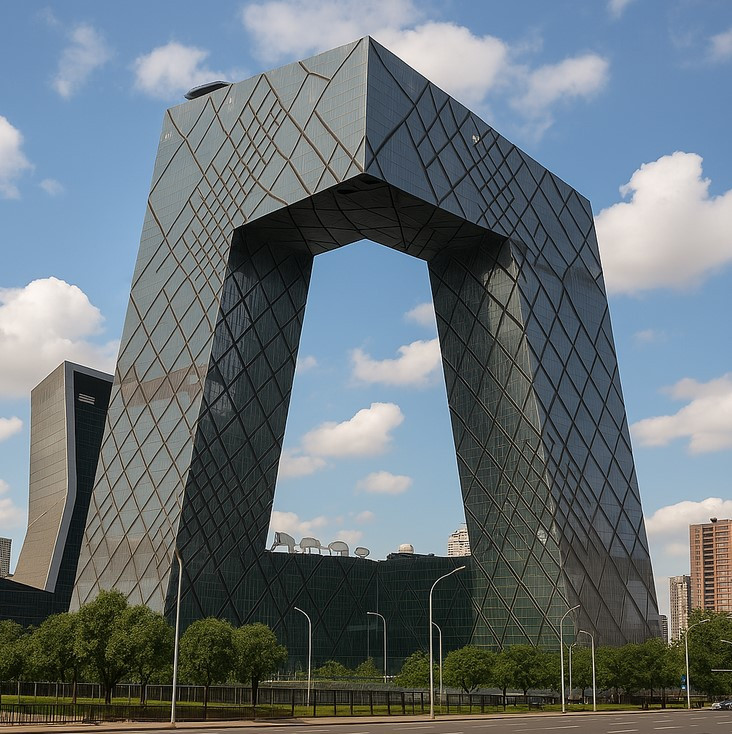
Glass is becoming smart, responding to changes in lighting, concrete is becoming self-healing, and buildings themselves are becoming energy-efficient. According to the International Green Building Council, about 40% of new projects in the neo-modernist style receive LEED or BREEAM sustainable development certificates.
Interestingly, neo-modernist projects often include elements rejected by classical modernism: reinterpreted decoration, references to local traditions, and adaptation to the surrounding context. This makes the style more flexible and adapted to local conditions. Special attention is paid to modernism in interior design, where principles of open space, functionality, and minimalism find new applications in contemporary living spaces.
Criticism of Modernist Style and Departure from It
Over time, modernist buildings began to be viewed critically. Modernist-style buildings were criticized for uniformity, lack of individuality, and excessive rationalism. People grew tired of "boxes" and began to strive for warmer, more emotional forms.
In the 60-70s of the 20th century, a gradual departure from the pure forms of modernism began, leading to the emergence of postmodernism, which again turned to historical elements and decorativeness. Postmodernist architects opposed themselves to the asceticism of modernists, returning color, ornament, and historical citation to architecture. During this period, buildings of the 1960s were built predominantly in late modernism and brutalism, which was characterized by massive concrete forms.
However, the influence of modernism on the development of architecture in the 20th century cannot be overestimated. It became a symbol of its era — a period of technical progress, optimism, and belief in a better future. Even today, in the era of digital technologies, many architectural solutions originate from modernist concepts.
Modern services of a modernist architect include not only designing new buildings but also adapting historical modernist structures to contemporary requirements of comfort and energy efficiency.
Conclusion
The architectural current of modernism reflected the spirit of the early 20th century — belief in progress, technology, and a rational approach to design. Famous architects of this movement experimented with new materials and forms, creating works that still amaze with their boldness and innovation today. The modernist style, despite subsequent criticism, became the most important stage in the development of world architecture and design, laying the foundation for many contemporary movements.
Here are a few little-known facts about modernism:
- The term "international style" was first used in 1932 at an exhibition at the Museum of Modern Art in New York, curated by Philip Johnson and Henry-Russell Hitchcock.
- Concrete, which became a symbol of modernism, was actually used in construction by ancient Romans, but reinforced concrete was only patented in 1867.
- The famous phrase "A house is a machine for living in" by Le Corbusier was inspired by his fascination with automobiles, especially Bugatti models.
Ordering a house in the modernist style today means turning to a time-tested aesthetic that, thanks to its functionality and rationality, remains relevant in the 21st century. Contemporary projects using modernist principles combine stylish simplicity of forms with energy efficiency and environmental friendliness. Such houses are more economical to maintain due to rational planning and optimal use of natural lighting. The services of a modernist architect allow you to create a space that will be not only beautiful but truly comfortable for living, working, or relaxing.

